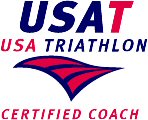FAQs About Cardio Training
Answered by the Life Fitness Academy
- Q. Why is it important to know your heart rate when exercising?
- A. Monitoring heart rate during exercise provides an excellent measurement of intensity. Intensity, or how hard you are working, is an important factor in determining if you will improve your fitness level. Heart rate training takes the guesswork out of how hard you should be working to achieve the results you want. That's why cardiovascular exercise equipment, such as treadmills or stationery cycles, have heart rate sensors, which are an easy way to monitor heart rate. Consult with a fitness/health professional to assure that you are exercising at the appropriate exercise intensity.
Sean Toomer, MEd
Life Fitness Academy - Q. What is my Target Heart Rate Zone?
- A. Target heart rate zone is the range of the number of times your heart beats per minute used to monitor training intensity. By exercising within a target heart rate zone, you are likely to achieve your goals. For an average healthy adult, the American College of Sports Medicine (ACSM) recommends the intensity of exercise be between 55% to 90% of maximum heart rate (HRmax), or 50 to 85% of heart rate reserve (a more complicated but more accurate measure of heart rate zone). However, individuals with a very low initial level of fitness may benefit from training intensities as low as 40% to 50% of VO2max.
To find the right zone, use one of the following formulas. Here's how to do it. Or, ask a fitness professional to help you.
Maximum Heart Rate Zone (Simplest Method)
Formula: 220 minus your age times intensity between 55% to 90%.
Example: 33 year old woman, seeking an intensity of 70 percent of maximal heart rate (a midrange percent frequently used by adults):
220-33 = 187 (estimated HRmax)
187 x .70 (percent exercise intensity)
131 target heart rate
Heart Rate Reserve Zone (More Complicated, More Accurate Method) Formula: 220 minus your age, minus your resting heart rate, times intensity between 50% to 85%, plus your resting heart rate. Resting Heart Rate: Take your wrist pulse first thing in the morning when you wake up without an alarm clock and before you get out of bed. With a very light touch of the fingers (not the thumb) count the number of beats for 30 seconds and multiply by 2. This number is the beats per minute (BPM) of your resting heart rate.
Example: 50 year old man with a resting heart rate of 70 bpm seeking an intensity of 50% of maximal heart rate:
220-50 = 170 (estimated HRmax)
70 = (resting heart rate)
170-70 = 100 (heart rate reserve)
100 x .50 = 50 (heart rate reserve x intensity)
50 + 70 = 120 (intensity + resting heart rate = target heart rate)
Consult with a fitness/health professional to assure appropriate exercise intensity for your fitness level.
Sean Toomer, MEd
Life Fitness Academy - Q. What is the difference between digital and analog heart rate monitoring systems found on cardio equipment?
- A. A digital system gives a more accurate heart rate reading than an analog system. A digital heart rate system detects electrical impulses given off by the heart muscle every time the heart beats. The system focuses directly on the signals from the cardiac muscle and can filter out electrical "noise" created by other contracting muscles (e.g. quadriceps muscles firing) or movement of a hand on the sensor. Digital signal processing uses a microprocessor that can perform complex mathematical operations very quickly to analyze the signal from a heart rate sensor. The accuracy of a digital system can keep the user within +/- 3-4 beats per minute.
An analog system has no way of knowing which muscle is firing. It gathers information, digitizes it and publishes what it thinks is the heart rate. It is unable to extract non-heart rate muscle firings, therefore the published heart rate could be off as much as 20-30 beats per minute. This is potentially dangerous for people who select their workout based upon heart rate monitoring.
Life Fitness conducted three independent research projects to assess the accuracy of a digital heart rate system. The studies were performed by the Exercise Physiology and Nutrition Laboratory at the University of Massachusetts Medical School. They found the following: The heart rate measurements with a digital heart rate system correlated very highly with clinical EKG readings on all cardiovascular pieces (bike, treadmill, stairclimber).
Greg Bahnfleth and Stephanie M. Vlach
Life Fitness Academy - Q. Why do machines display Watts?
- A. Watts is an expression of the mechanical rate of work (power output) for a device such as a cardiovascular machine. In other words, a watt is a measurement of the amount of power required by the machine to maintain the workload (pedal resistance, speed and incline) being experienced by the user.
On some cardiovascular machines, watts allow a fitness professional or the user to program the machine at a specific watt level. This allows you to work at a consistent level of intensity. Watts are also used as a guideline for fitness professionals to develop an exercise program for a client, progress a client at specific intensity levels and easily measure levels of improvement.
For instance, a personal trainer may have a client who is recovering from heart problems. The doctor may recommend that the client exercise on a cardiovascular machine at an intensity of 100 watts. The trainer can then program the treadmill, cycle or other cardio machine to operate consistently at 100 watts. As the client improves and with doctor's approval, the personal trainer can then increase the watt level in specific stages.
Greg Bahnfleth and Stephanie M. Vlach
Life Fitness Academy
Article courtesy of IDEA Health & Fitness Association. Reprinted with permission.
Personal Training and Fitness Articles |
Wellness and Fitness Handouts
Nutrition Articles and Handouts








